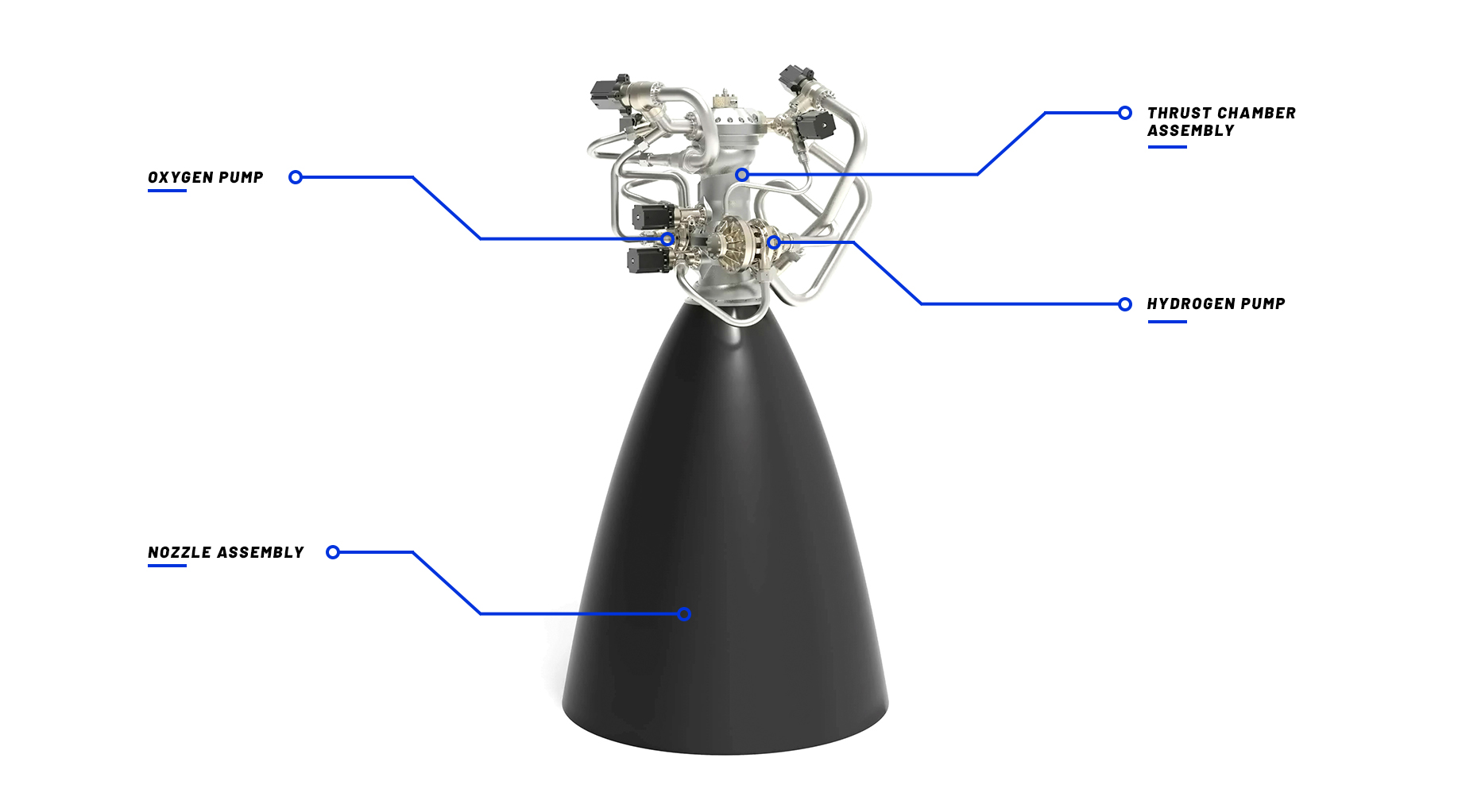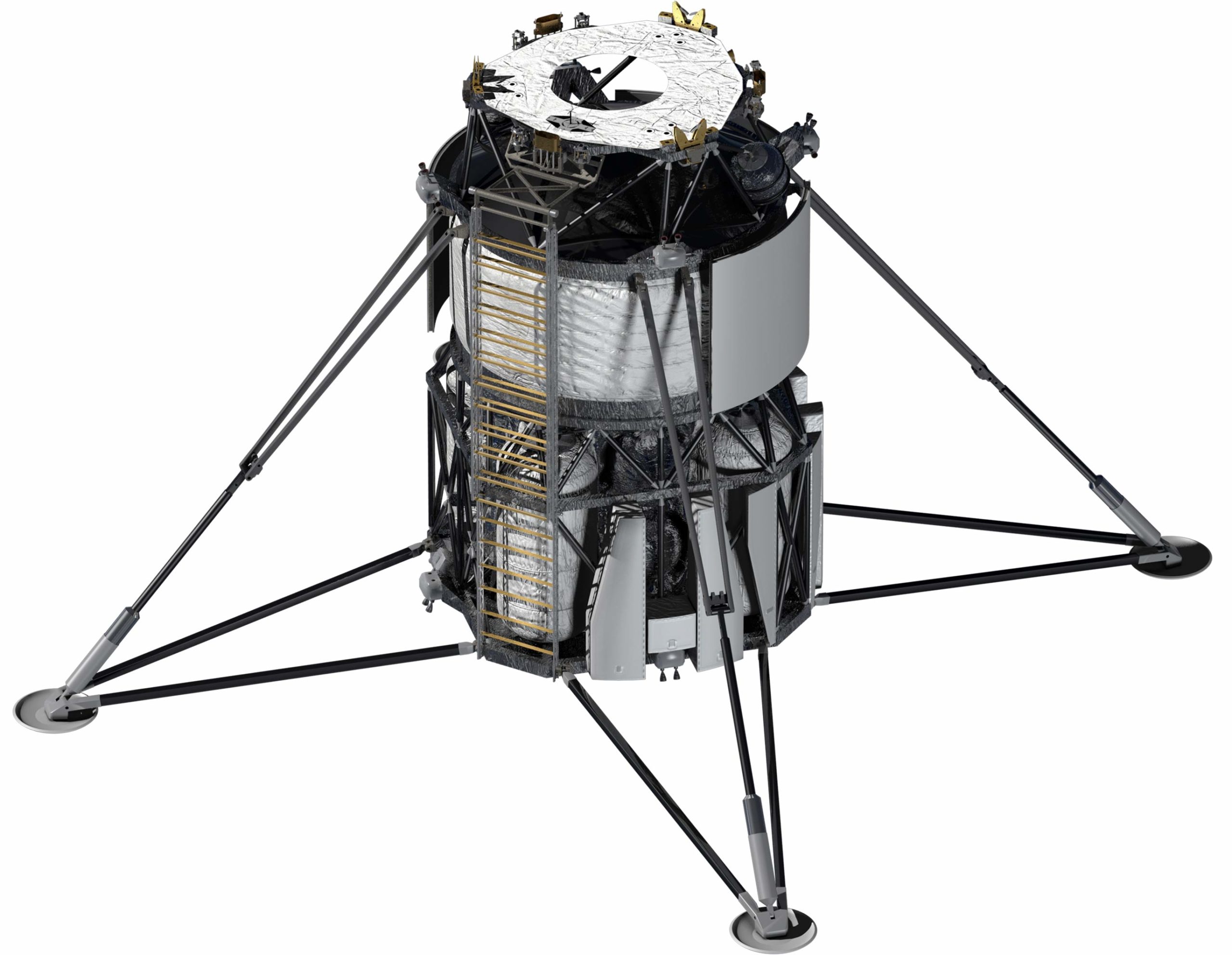Throughout Blue Origin’s 20-year history, the aerospace manufacturer has taken steps to make access to space cheaper and more reliable by developing rocket engines, launch vehicles, and capsules that will take astronauts to the next space frontier. As part of NASA’s Human Landing System (HLS) award for the agency’s Artemis lunar exploration program, Blue Origin has created a three-stage lander that could take the first woman and next man to the surface of the Moon by 2024.
The company’s lunar lander system will be powered by an additively manufactured high-performance BE-7 engine, which engineers at Blue Origin have already begun hot-firing. On December 4, 2020, the program kicked off the fourth thrust chamber test series of its high-efficiency engine at NASA’s Marshall Space Flight Center in Huntsville, Alabama, bringing the program’s cumulative test time to 1,245 seconds and further demonstrating capabilities to land on the Moon.
Since April 30, 2020, Blue Origin has begun competing with Elon Musk‘s SpaceX and Leidos-owned aerospace company Dynetics to win a contract to build NASA’s next human lunar landing system that will deliver the first crewed mission to the Moon’s south pole in four years, as part of the third phase of the Artemis program. The three NASA commercial partners are expected to continue refining their lander concepts through the 10-month, $967 million contract base period that began in May 2020 and is ending in February 2021. Then, the agency plans to select two out of the three companies for the next phase of HLS development, to perform initial demonstration missions in 2023, and will ultimately culminate in crewed demonstration missions to the lunar surface beginning with the Artemis III mission in 2024.
Nonetheless, after the successful completion of the fourth BE-7 engine testing, Blue Origin founder Jeff Bezos was quick to announce on social media that his company’s 3D printed engine will not only power the Blue Origin-led HLS lunar lander, but it will be the one taking the first woman to the Moon. The e-commerce pioneer posted a video of the engine testing on Instagram and wrote: “This (BE-7) is the engine that will take the first woman to the surface of the Moon.”

The BE-7 is Blue Origin’s additively manufactured, high-performance, dual-expander cycle engine. Image courtesy of Blue Origin
Developed privately over more than three years, the BE-7 is the latest high-performance engine in the Blue Origin family. It builds upon the demonstrated success of the BE-3 PM hydrogen/oxygen engine that powers the New Shepard suborbital rocket. The BE-7 is a high-performance, additively manufactured liquid oxygen/liquid hydrogen lunar landing engine with 10,000 pound-force (lbf) of thrust – throttling down to 2,000 lbf of thrust for a precise landing on the Moon.
The latest hot fire testing further validates the engine that will power Blue Origin’s HLS in support of NASA’s Artemis program. So far, in this recent campaign, the thrust chamber was tested for a duration of 20 seconds, bringing the cumulative testing time on the BE-7 thrust chamber to 1,245 seconds.
“This thrust chamber test measured the ability to extract energy out of the hydrogen and oxygen cooled combustor segments that power the engine’s turbopumps – the key to achieving high engine performance,” said John Vilja, Senior Vice President of Blue Engines at Blue Origin. “The high specific impulse, deep throttling, and restart capabilities of the BE-7 make it the ideal engine for large lunar payload transport as well as many other in-space applications. Thanks to the NASA Marshall Space Flight Center team for their support in this testing. We value this partnership and are looking forward to more test campaigns with them.”
Under the Next Space Technologies for Exploration Partnerships (NextSTEP-2) commercial firm-fixed-price, milestone-based contracts, Blue Origin leads the HLS National Team, which includes partner companies Lockheed Martin, Northrop Grumman, and Draper. As prime contractor, Blue Origin leads program management, systems engineering, safety and mission assurance, and mission engineering and operations; and develops the descent element, which is based on its Blue Moon cargo lunar lander. While Lockheed Martin will build the ascent element that includes the crew cabin and will lead to crewed flight operations and training.

Blue Origin is providing the Descent Element that is based on the Blue Moon cargo lunar lander and its BE-7 engine, which have been in development for three years. Image courtesy of Blue Origin
Northrop Grumman will build the transfer element (based largely on its Cygnus cargo module that services the International Space Station), set to deliver the lander into low lunar orbit and final descent. Finally, Draper will provide the guidance, navigation and control, avionics, and software systems that draw largely on similar systems the company has developed for NASA. Within the National Team’s HLS architecture, the BE-7 will be used on both the descent element and transfer element.
In their proposal, the National Team outlined a plan in which the Integrated Lander Vehicle (ILV) can dock with either Orion or the Gateway to await crew arrival. The Blue Origin National Team’s elements for the Human Landing System can be launched individually on commercial rockets or combined to launch on NASA’s Space Launch System.
“The BE-7, a turbomachinery-based engine using the most efficient propellants, is optimal for deep-space maneuvers and landing on the Moon,” said Brent Sherwood, Vice President of Advanced Development Programs at Blue Origin. “Our engine test series is steadily maturing what’s needed to get Americans safely on the lunar surface as soon as possible. We are positioning to use the Moon’s ice resources for rocket propellant, which will make exploration sustainable and open the Moon for commerce.”

The National Team looks forward to embarking on the next steps with NASA and returning to the Moon. Image courtesy of Blue Origin
In October 2020, NASA’s HLS program completed Certification Baseline Reviews (CBR) with the three U.S. companies competing to provide landers that will deliver Artemis astronauts to the Moon. Now that the contract base period is just a few months from ending, Blue Origin is now focusing its attention on the engine capabilities, continuing work with its partner companies on a flexible, multi-element, commercial, and sustainable solution for NASA’s HLS effort. Looking towards 2024, the National Team’s plans with NASA include incremental testing and demonstration of all elements, both on the ground and in space. With high hopes of conducting a full-up landing demonstration of the Descent Element in 2023 as well as pre-positioning significant payloads at the lunar South Pole. The combined experience of the team is one of the biggest assets in this competition, uniquely positioning them for what Bezos already sees as a clear success in delivering crewed missions to the Moon.
Subscribe to Our Email Newsletter
Stay up-to-date on all the latest news from the 3D printing industry and receive information and offers from third party vendors.
Print Services
Upload your 3D Models and get them printed quickly and efficiently.
You May Also Like
Titomic Opens New U.S. Facility in Huntsville to Boost 3D Printing for Defense
Australian company Titomic (ASX: TTT) has expanded into Huntsville, Alabama, opening a new U.S. facility that brings its advanced metal manufacturing technology closer to key defense and aerospace hubs. The...
3D Printing News Briefs, May 31, 2025: Project Call, Consortium, Certification, & More
We’re starting with the latest America Makes Project Call in today’s 3D Printing News Briefs, and a consortium to promote the adoption of additive manufacturing has been founded in Spain....
3D Printing News Briefs, May 24, 2025: Commercialization, Acquisition, & Facilities
We’re all business in today’s 3D Printing News Briefs! Titomic and nuForj have announced a strategic partnership, and AMETEK is acquiring FARO Technologies. CDG 3D Tech opened an Additive Manufacturing...
3D Printing News Briefs, May 21, 2025: Medical Training Models, Connectors, Makerspace, & More
We’re starting with research and medical in today’s 3D Printing News Briefs, as a research team from Caltech is using sound to 3D print deep inside living tissue, and rural...

































